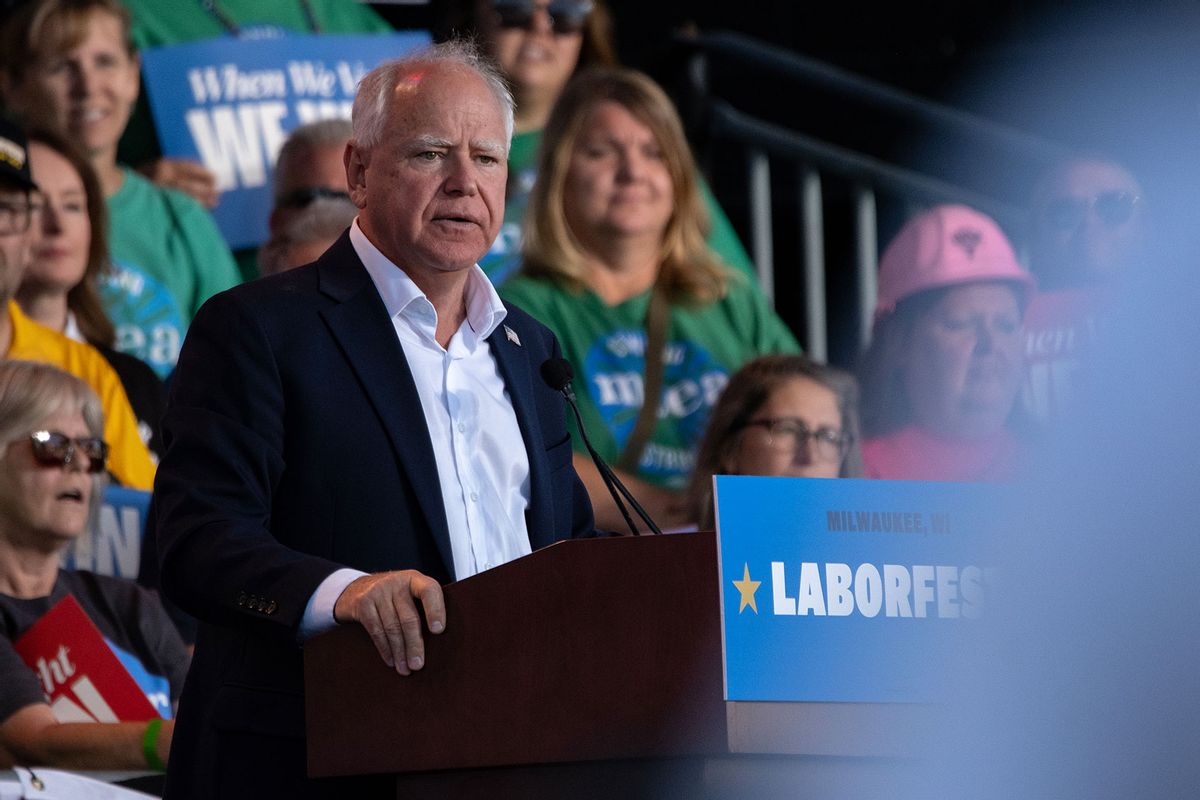Native American leaders are drawing attention to their demographic as a potentially decisive group in the 2024 election, especially in what Stephen Roe Lewis, governor of the Gila River Indian Community in Arizona, calls the “tribal wall” — Arizona, Nevada, North Carolina and Michigan, states with relatively high proportions of Indigenous voters.
On Oct. 9, Democratic vice-presidential nominee Tim Walz made a stop in Arizona to meet with tribal leaders about what they could expect if Kamala Harris wins next month's presidential election. The Tucson Sentinel reports that Lewis stressed the importance of Indigenous voters in President Joe Biden’s narrow victory in Arizona in 2020.
“Arizona, Wisconsin, Nevada, North Carolina and Michigan all have substantial tribal populations,” Lewis said. “And if we make our voices heard by voting, we can do in the rest of the country what we did here in Arizona in 2020: help elect the next president and vice president of the United States.”
There are roughly 4.7 million eligible Native American voters in the United States, and many of them are concentrated in some of this year’s most contested states. In Arizona, a state decided by less than 11,000 votes in 2020, there are more than 319,000 Native American voters, and leaders in the community have been warning the candidates that their votes could be decisive.
At the event with Walz last Wednesday, Lewis came out in support of the Democratic ticket, saying that the Minnesota governor “gets the importance of the Native vote.” Indeed, Walz's state is also home to the nation's highest-ranking Native American elected official, Lt. Gov. Peggy Flanagan, who would become governor if Walz is elected vice president.
“The tribal vote has never been more important,” Lewis said, adding that Walz “respects tribal nations as equal partners" and predicting "an unprecedented partnership" with Native groups "in this next administration.”
In Arizona, the Native American population leans heavily Democratic Party, with Biden winning the Indigenous vote in the Grand Canyon State by a 58-point margin in 2020, according to SplitTicket.
We need your help to stay independent
In Wisconsin, where there are around 93,000 Native Americans, the Native vote was much more evenly split, with Biden winning among the demographic by a 3.8-point margin. It’s worth noting that the Census Bureau has sometimes struggled to accurately count the number of Native Americans in Wisconsin, and the 2010 census reportedly undercounted the group by about five percent.
In North Carolina, where there are around 209,000 Native Americans, according to census data, Indigenous voters have swung heavily toward Republicans in recent decades. In 2012, Barack Obama won among Native voters by nearly 21 points, but by 2020 that had completely reversed, with Donald Trump prevailing among the group by 28 points.
In Nevada, where the Census Bureau reports around 67,000 Native Americans, Indigenous voters will be allowed to vote with the Effective Absentee System for Elections for the first time in 2024. That system allows residents of Native reservations, many of whom live far from post offices or polling places, to register to vote electronically from home.
In Michigan, which has an estimated 148,000 Native Americans, Indigenous organizers are pushing a concerted effort to get out the vote, providing resources for requesting a ballot and voting on Election Day.
Want a daily wrap-up of all the news and commentary Salon has to offer? Subscribe to our morning newsletter, Crash Course.
Over the course of American history, Native peoples faced an uphill battle in exercising full citizenship rights, both because of official and de facto discrimination and also through underinvestment in voting infrastructure in Native American communities.
In Nevada, for example, residents of the Duckwater reservation had to travel 140 miles to reach the nearest polling location, an issue that eventually found its way to the Supreme Court. Voting by mail also presents a challenge because many reservation residents do not receive mail service at their home addresses and may use a shared post office box. (Typically, voter registration must be linked to a fixed physical address.)
In an August appearance on MSNBC, Minnesota Lt. Gov. Flanagan said it was urgent for presidential campaigns not to overlook Native American voters, especially in what is expected to be a tight election.
“Native people are strategically located in swing states across the country and our vote, the Native vote, can make or break a campaign or election,” Flanagan said. “So, in many ways, ignore us at your peril.”



Shares